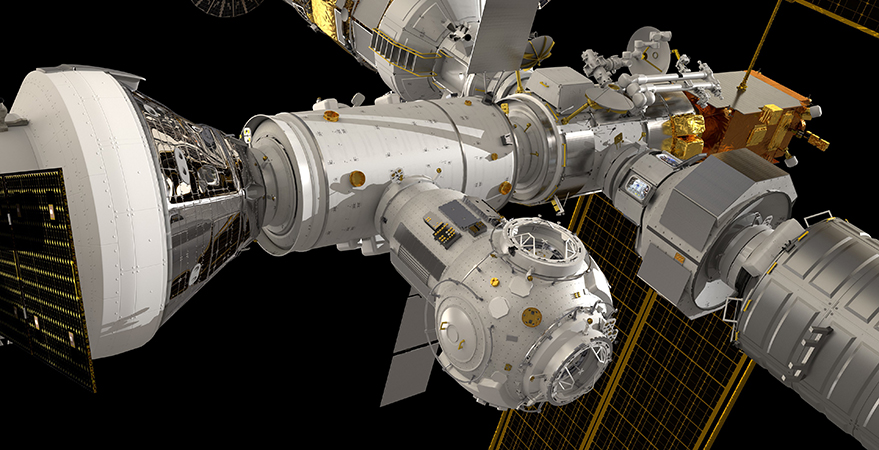Products You May Like
The European Space Agency (ESA) signed a nearly €296 million ($362 million) contract with Thales Alenia Space Jan. 7 to build a European module for NASA’s lunar Gateway space station.
JOHANNESBURG — The European Space Agency (ESA) signed a nearly €296 million ($362 million) contract with Thales Alenia Space Jan. 7 to build a European module for NASA’s lunar Gateway space station.
The European System Providing Refueling, Infrastructure and Telecommunications (ESPRIT) module will provide communications and refueling capabilities to Gateway, a planned space station in orbit around the moon intended to support crewed missions to the lunar surface.
Thales Alenia Space announced Oct. 14 that it had been selected to build the ESPRIT Gateway module. On Jan. 7, the contract was finalized and signed by both parties. The project will be led by Thales Alenia Space in Cannes, France, with support from Thales Alenia Space in Italy and the United Kingdom.
ESPRIT will consist of two main elements, the Halo Lunar Communication System (HLCS) and the ESPRIT Refueling Module (ERM).
HLCS will provide the Gateway space station with data, voice and video communications. The system is under fast-track development and is slated to be launched in 2024 as part of the U.S. Habitation and Logistics Outpost (HALO) being built by Northrop Grumman Innovation Systems.
ERM will enable the station to receive propellants from visiting spacecraft to maintain its orbit around the moon and to refuel vehicles transiting to the lunar surface. Additionally, the module will offer a small pressurized work space for the station’s crew equipped with large windows offering 360-degree views. ERM is expected to be delivered in 2026 with its launch following a year later.
In addition to the ESPRIT module, Thales Alenia Space will also be responsible for the International Habitation (I-HAB) module which will provide crew living quarters and docking ports to support vehicles in transit. The module is a joint collaboration between ESA, NASA and the space agencies of Canada and Japan. It is slated to be launched in 2026.
